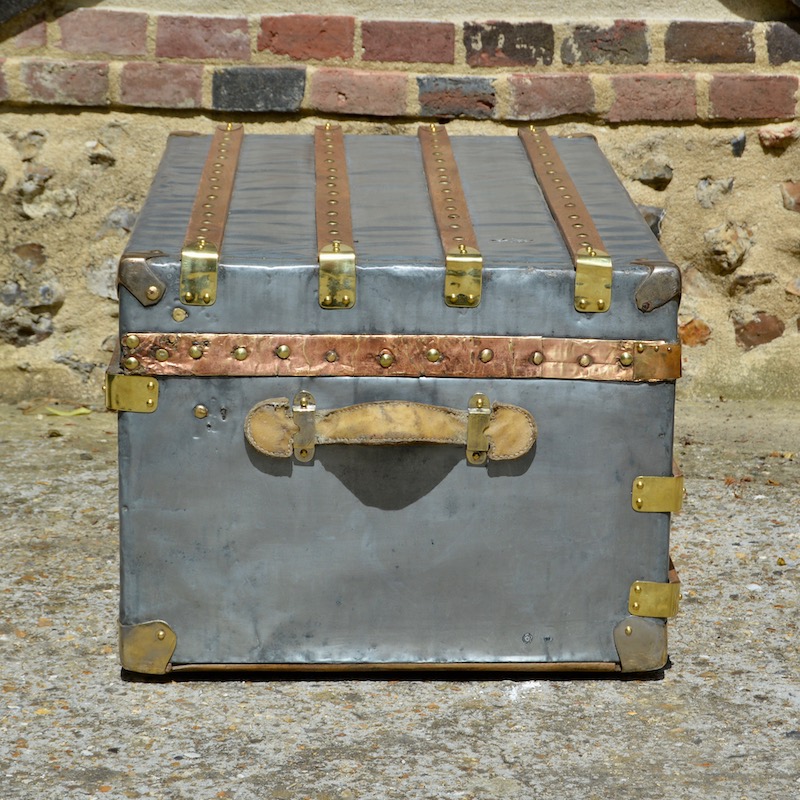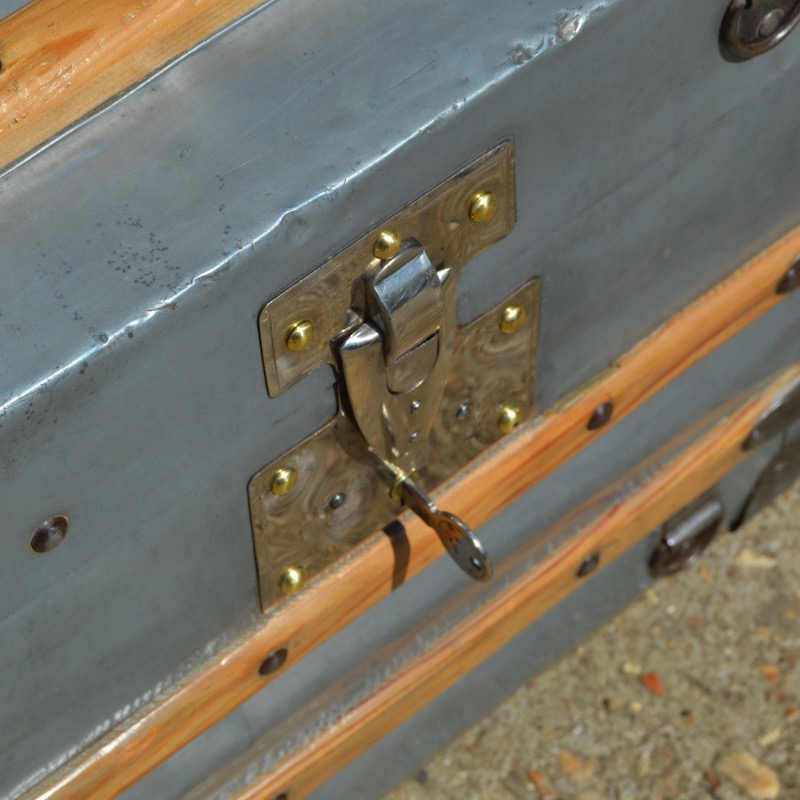We use cookies to make your experience better. To comply with the new e-Privacy directive, we need to ask for your consent to set the cookies. Learn more.
External coating
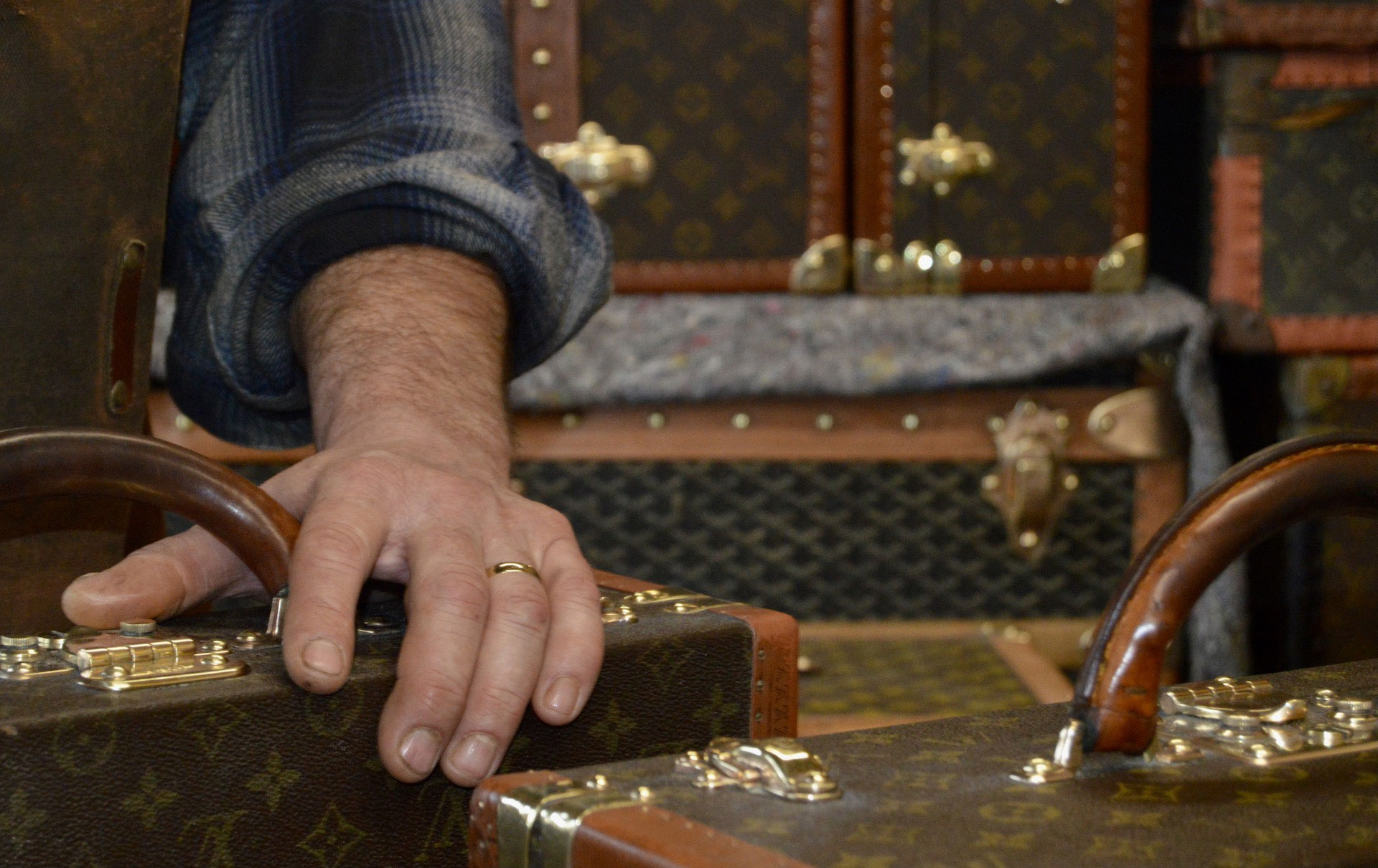
Restoration of the exterior of a trunk :
Our approach to the restoration of these objects is to recover the original design of the luggage, while preserving the stigma of its various journeys or owners.
When cleaning an antique trunk, we place as much emphasis on restoring the exterior as we do on preserving its history. The names of the original owners, the transport labels, the hotel labels, the previous restorations, etc. It is all this history that characterises certain trunks and that we feel is important to preserve.
The exterior of a trunk is the support of this past. We must therefore restore it, nourish it, so as to ensure that it has a second life, almost as long as those past years.
The different coatings
Trunk makers used many different coverings to cover their luggage. Among these materials, we find: coated cloths and papers, Jacquards, Parchment (etc.), but also all the specific cloths of the houses: For example, Goyardine at Goyard or Pegamoïd at Louis Vuitton. The methods of cleaning and caring for luggage vary greatly depending on the type of cover used. Leather and coated canvas cannot be restored in the same way.
For a coated canvas, a light degreasing mixture is applied to the canvas to clean the various stains. Some of these coated canvases have a particularly fragile pigment pattern, which may disappear when cleaned. These trunks all have a very different history, and the materials that cover them react differently depending on their exposure to sunlight or humidity. We therefore have to restore these canvases on a case-by-case basis and carry out numerous tests under the luggage to find the best treatment.
Once restored, the trunks must be polished with an antique wick. As for a traditional piece of furniture. This monthly maintenance allows the luggage to keep its shine and patina of time. An important part of the restoration process is to work on this natural patina.
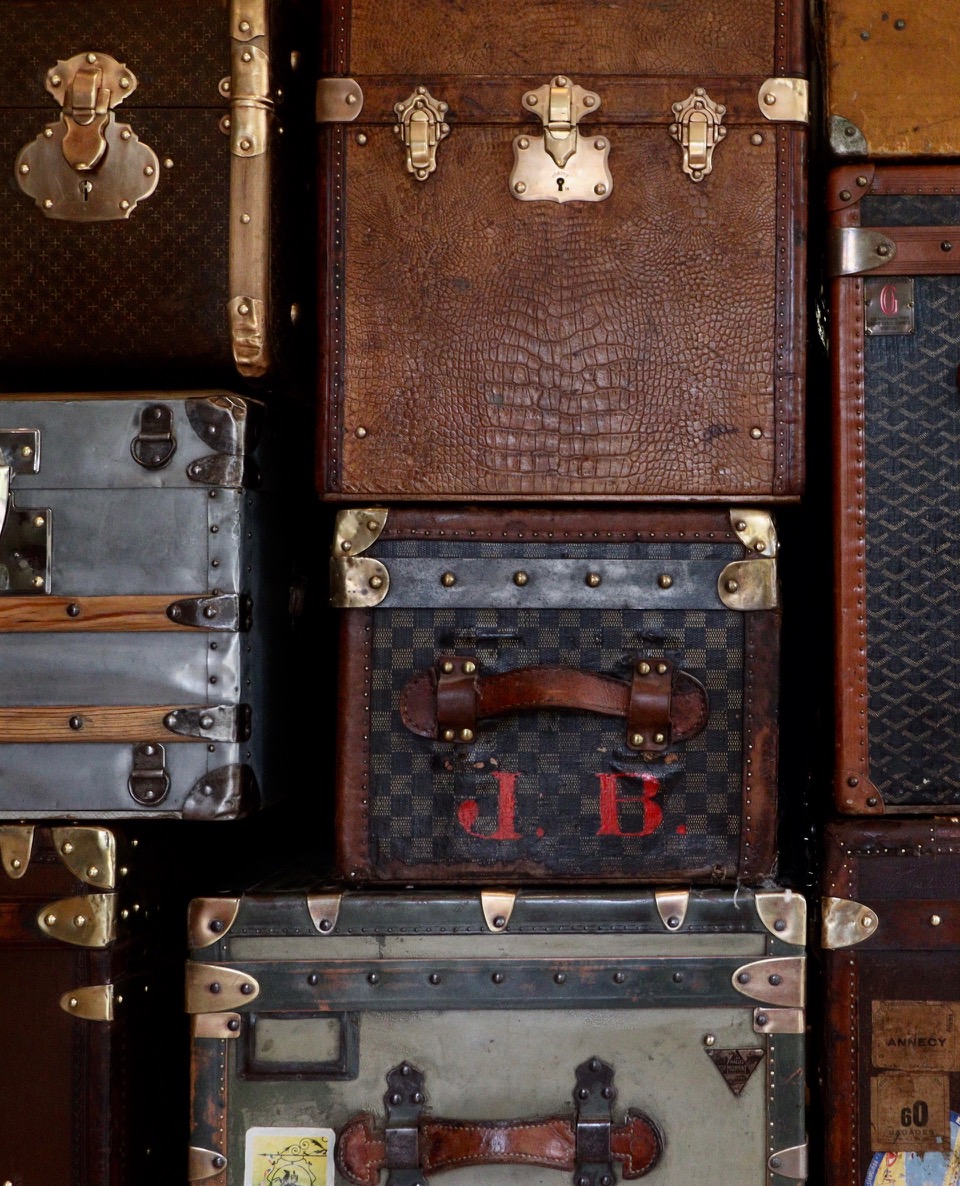
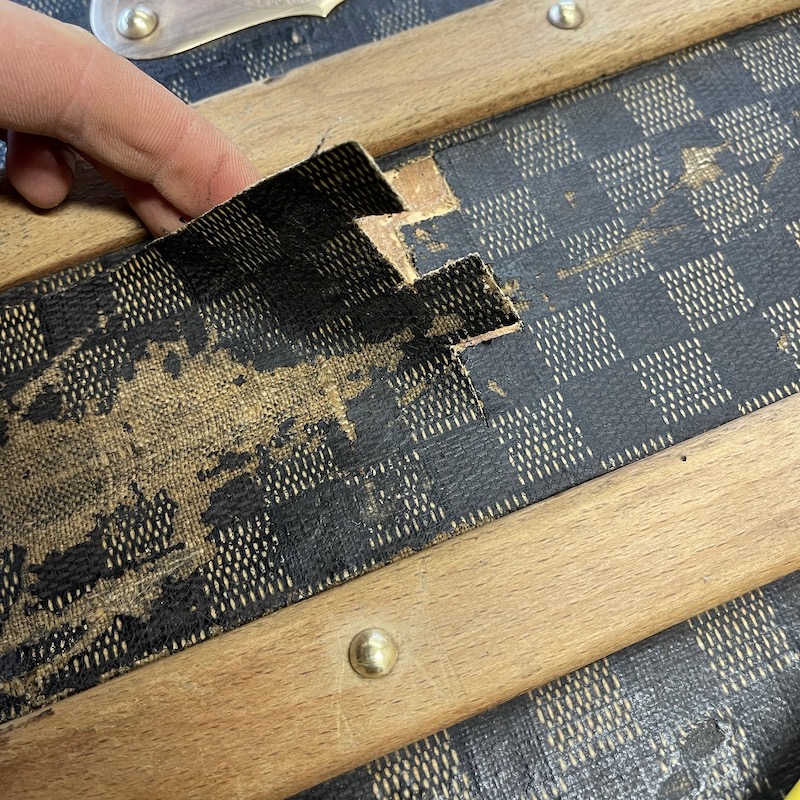
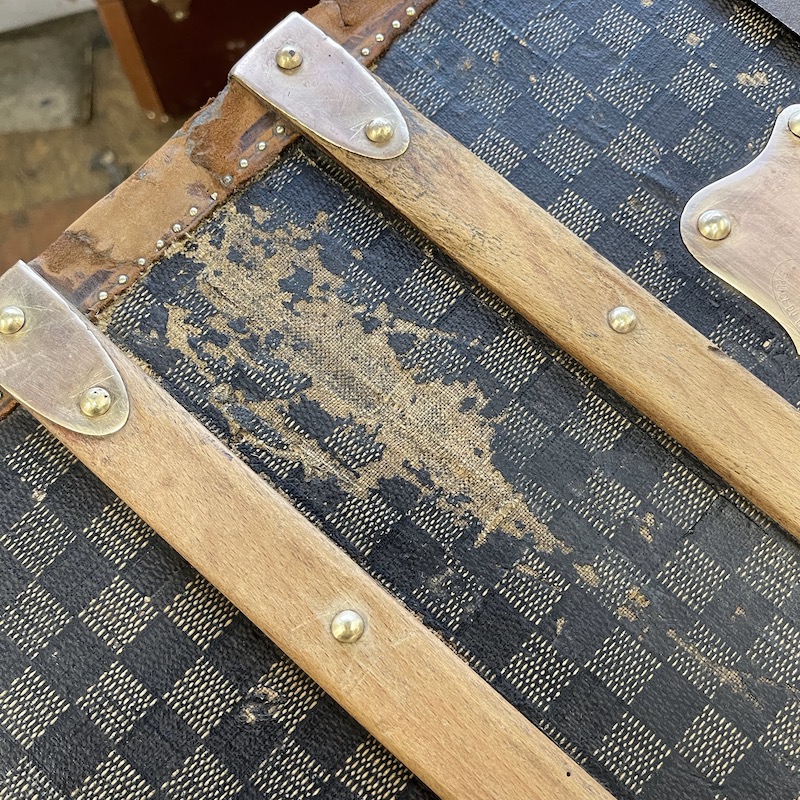
The lack of fabric
Constantly confronted with bad weather, these trunks were constantly moved between wagons, hotels and crossings. During these various journeys, the luggage was regularly damaged, causing the canvas to be missing or the pattern on the covering to fade. For this type of problem, we have to find the same canvas and make a graft on the damaged part. We can also, on certain "stencil" canvases, touch up the paint on the motif.
Once the canvas has been restored, we have to make the whole thing uniform, so as to mask the restoration that has been carried out.
The important restorations
Some trunks have had a particularly painful life. In these two examples, the handles, a large part of the canvas and the headband are missing.
For this type of problem, the first step is to check the wooden shaft of the trunk. Trunk makers generally used poplar, a light and strong wood, which offered many advantages to the manufacturers. If the barrel is damaged, we need to restore the missing wooden parts, so that we can re-cover it on a good support.
Once the barrel is prepared, we can re-cover the damaged part, with scraps of canvas found and preserved for 25 years on similar models, which cannot be saved. Some damaged trunks remain blocked in our workshop for several years, until we find the right covering to restore them. This is why we are constantly looking for old trunks, whatever their condition. Every part of the luggage, from the nail to the chopsticks, can be used.
After the lining, the restoration of the headband is also a delicate part. On the Goyard trunk, the headband is made of lozine. It is therefore necessary, as with the canvas, to find a similar part of the headband and to change the whole piece.
On the Louis Vuitton trunk, the headband is originally covered in leather. You can see on the photo that a piece of canvas has been attached to the damaged leather part. It is therefore necessary to dismantle the original part and the past restorations, in order to re-sheathe the entire headband. The risk is that the restored part is too visible on the whole trunk. It is therefore necessary to use a leather that can be patinated, in order to make the whole uniform.
We then have to reattach handles similar to the original ones, in leather on the Goyard trunk and in brass on the Louis Vuitton trunk, repaint any original colours and clean the brass parts.
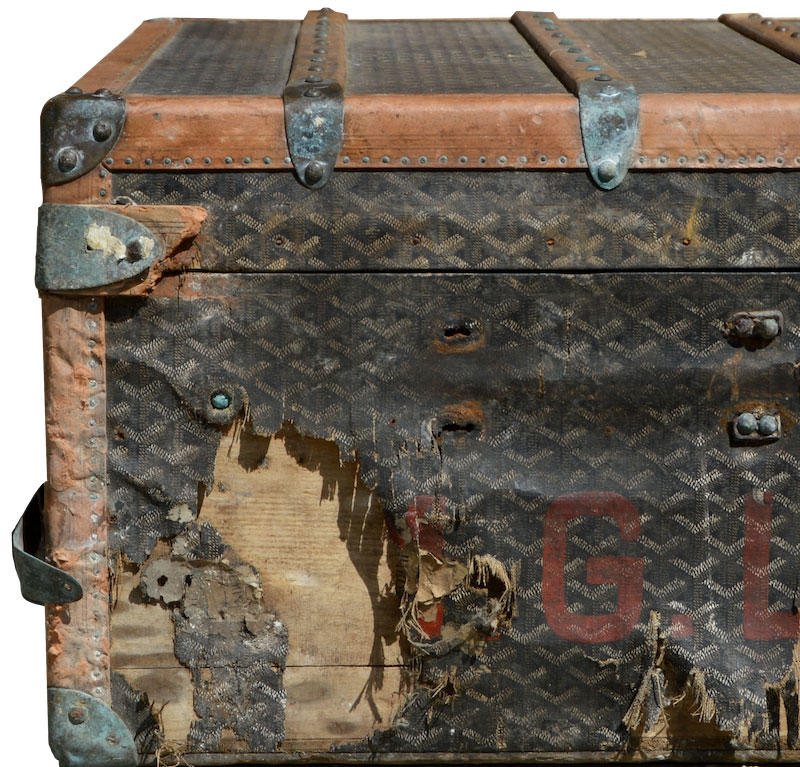
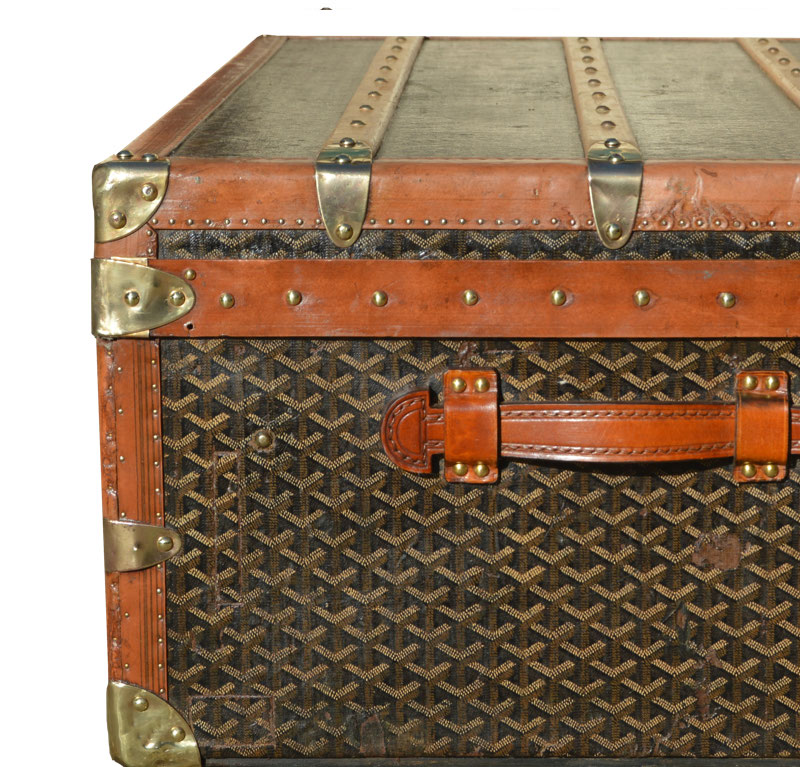
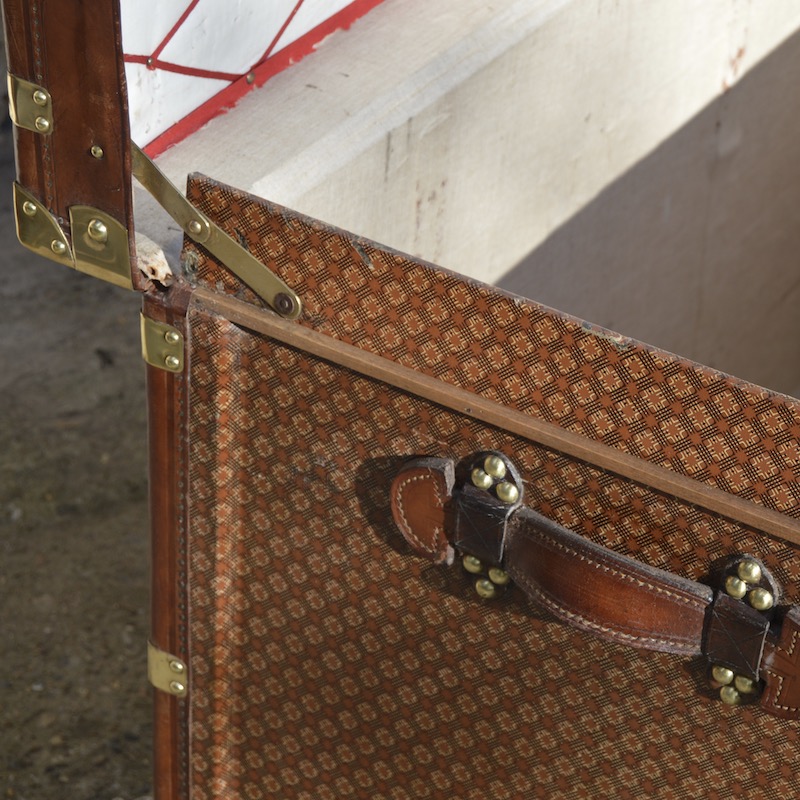
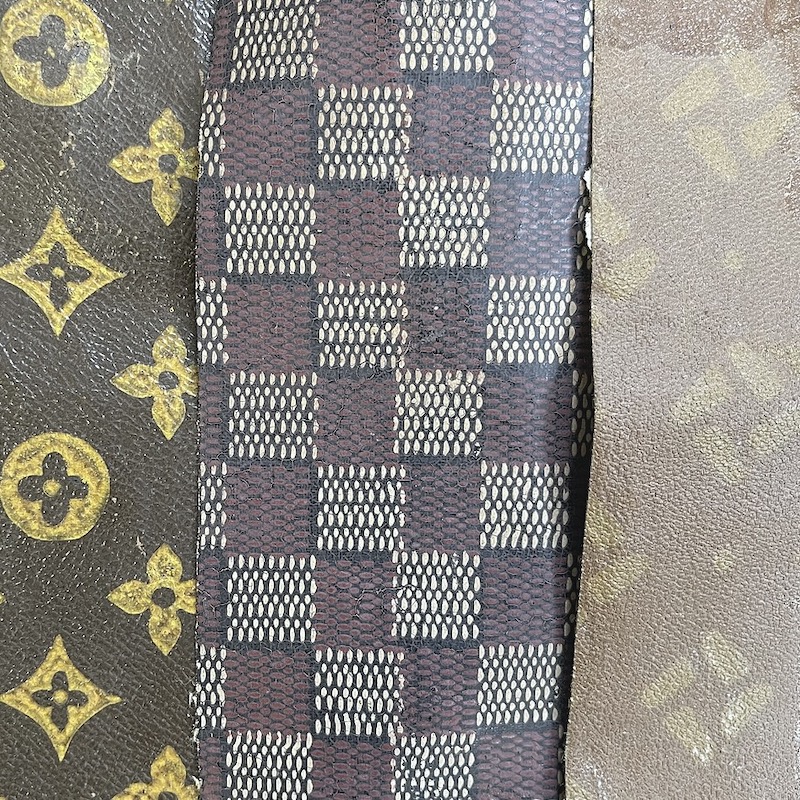
Canvas and coated paper
The coated canvases (or waxed canvases) used by trunk makers in 1900 were generally on a cotton base, treated with a linseed oil-based varnish to make them water-repellent. To restore this type of canvas, a very mild product must be applied to the coating in order to clean the various stains, without reaching the cotton support (which would damage the canvas irreparably).
Jacquard woven fabrics
Jacquard fabric (used in particular for Louis Vuitton trunks) is very delicate and particularly complicated to work. Assembled from a loom and cotton threads, it is coated on the trunk after interfacing to protect it. Over time, this varnish eventually disappears, leaving the canvas unprotected and subject to the elements.
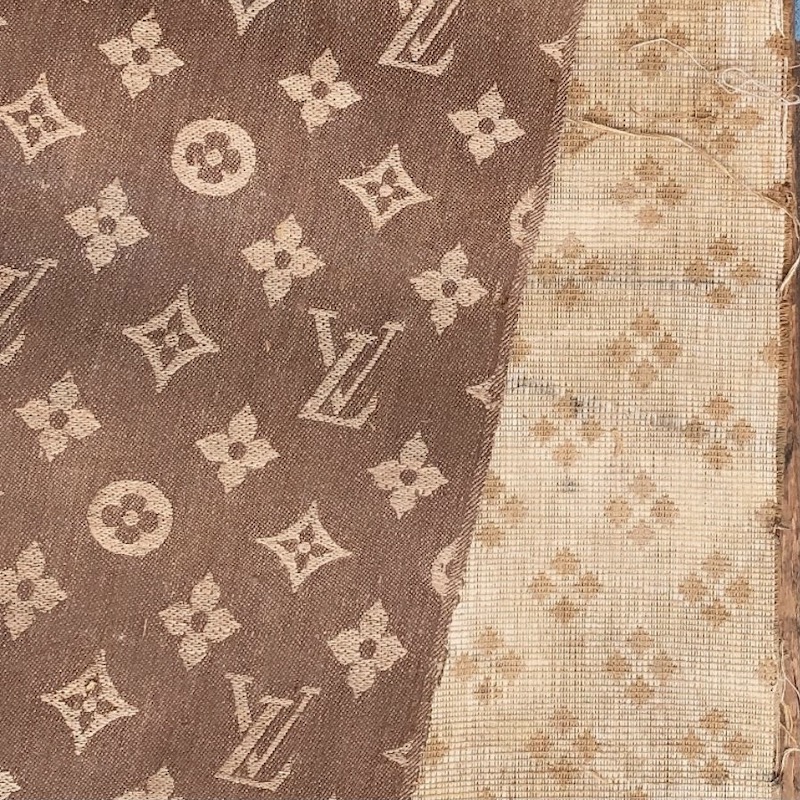
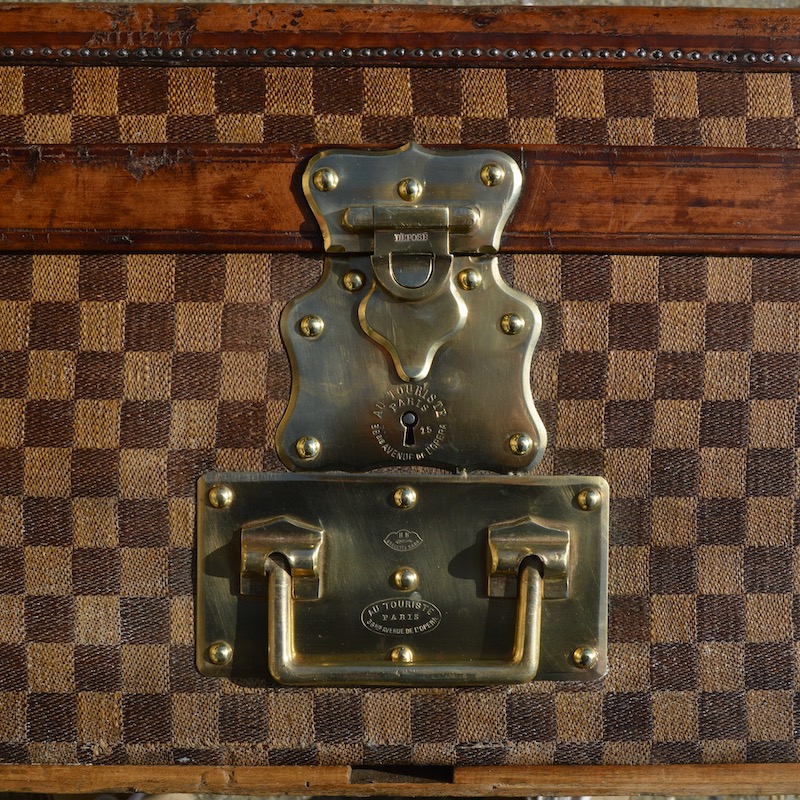
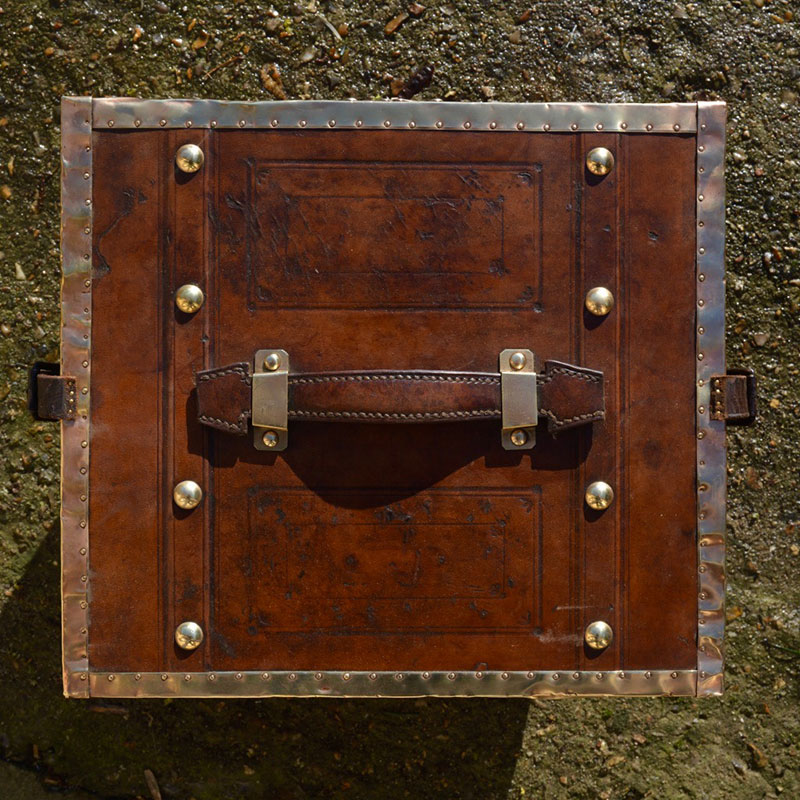
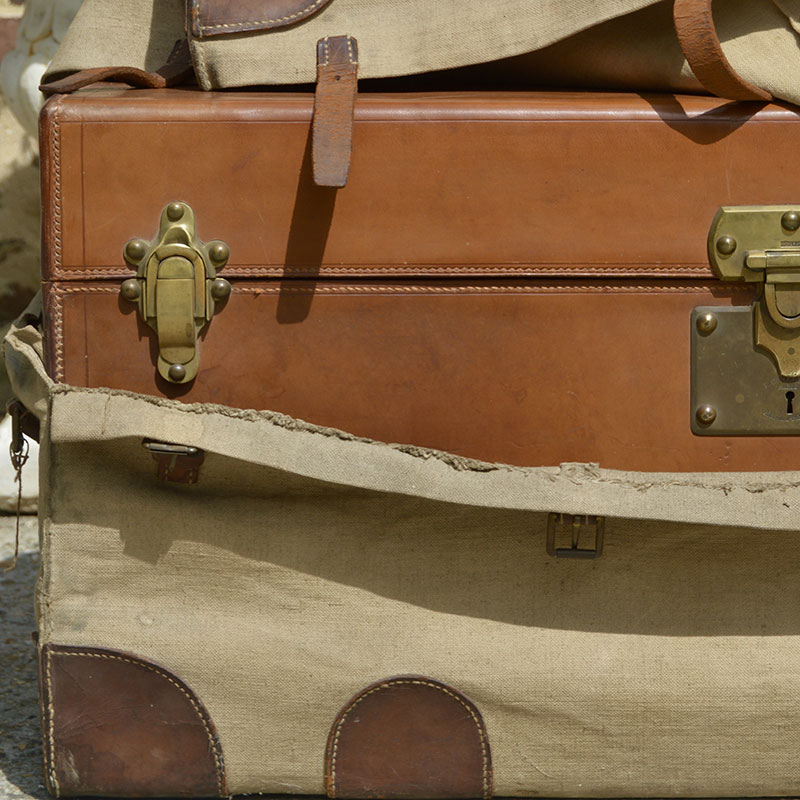
The leather coverings
Natural vegetable leather was very often used to cover trunks. The most luxurious covering of the time, its composition allowed it to develop a patina over time, allowing it to become a little more elegant each year, like a fine wine. Today, leather needs to be cleaned and nourished to ensure a longer journey through time.
Zinc and copper coatings
Zinc and copper were popular materials with explorers, who used their trunks to the ends of the earth without fear of insects or moisture damaging their belongings. Today, these particularly durable trunks are generally well preserved and the use of a mild deoxidiser is sufficient to restore the original appearance of the luggage.
